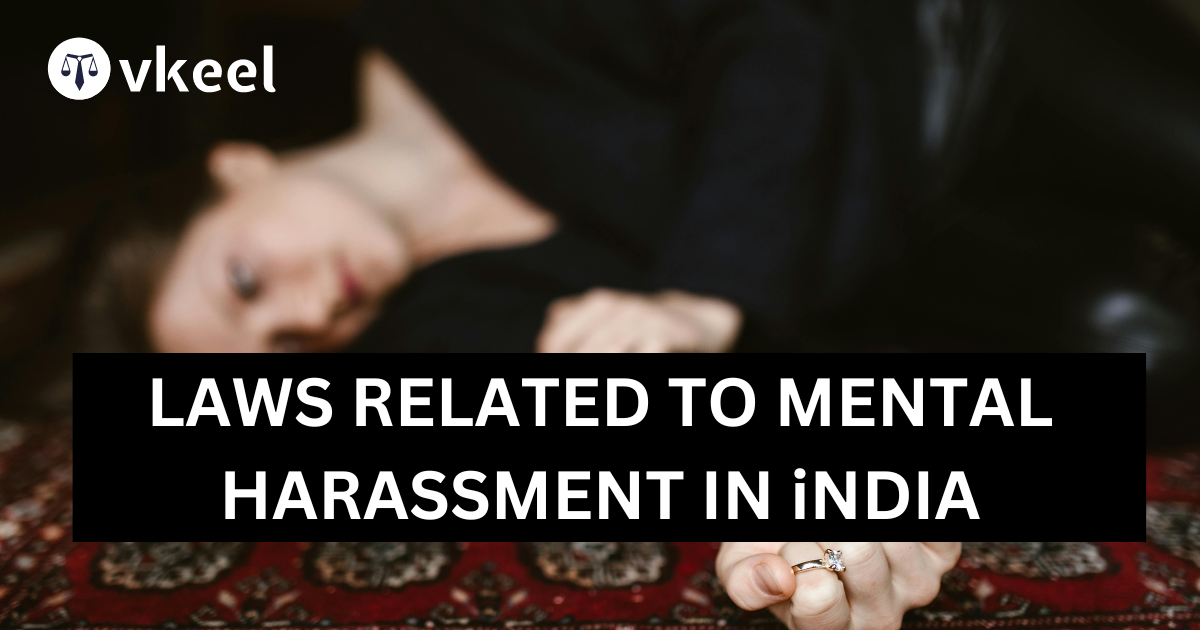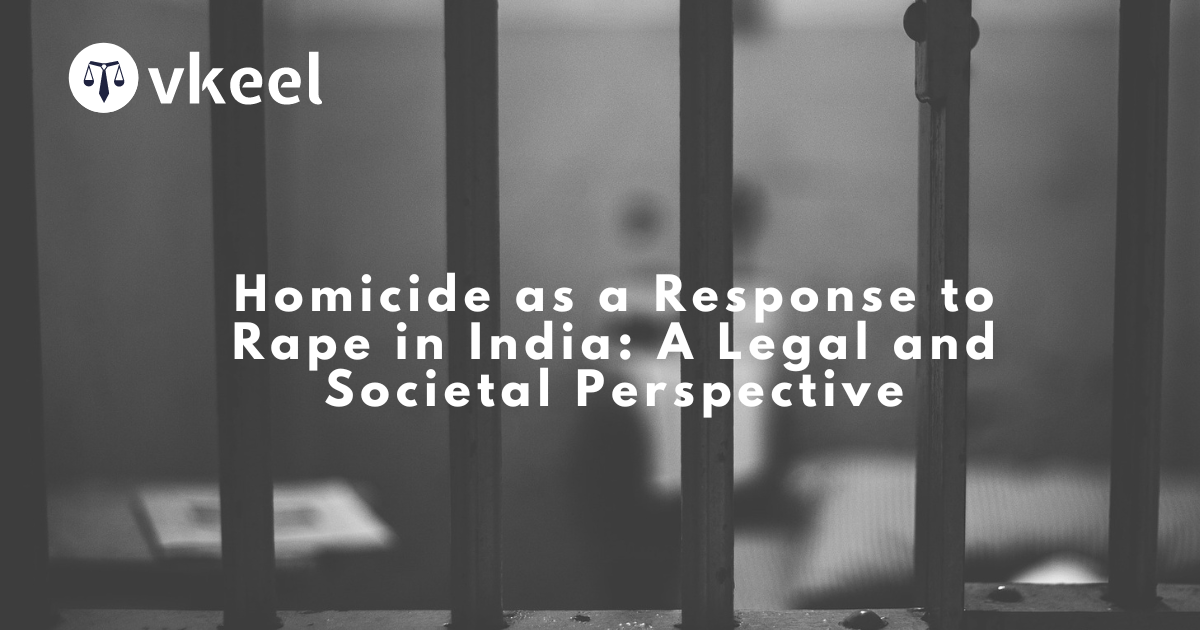Laws Related to Mental Harassment in India
By Himanshu Kumar
Table of Contents
Introduction
Mental harassment, also referred to as psychological harassment or emotional abuse, is a form of aggressive behavior aimed at causing emotional or psychological distress to an individual. Unlike physical abuse, which may leave visible marks or injuries, mental harassment primarily targets a person’s mental well-being and emotional state. It can occur in various contexts, including workplaces, schools, intimate relationships, and social settings, and may manifest through different forms of behavior, such as verbal attacks, manipulation, intimidation, and isolation.
In recent years, India has seen a significant shift in its legal landscape concerning mental harassment. With growing awareness about the detrimental effects of psychological abuse, lawmakers have enacted and amended laws to address this issue comprehensively.Mental harassment is primarily addressed through various legal provisions that encompass a wide range of behaviors aimed at causing emotional or psychological distress to an individual. These laws apply across different contexts, including workplaces, educational institutions, public spaces, and domestic environments.
Understanding the need of mental harassment laws in India
Mental harassment laws typically encompass a range of behaviors intended to intimidate, degrade, humiliate, or otherwise harm an individual psychologically. These laws often exist within broader frameworks addressing workplace harassment, domestic violence, cyberbullying, and other contexts where psychological harm may occur. While specific provisions vary by jurisdiction, common elements of mental harassment laws include:
Definition of Mental Harassment: Laws typically define mental harassment as any behavior that causes emotional or psychological distress to another person. This can include verbal abuse, threats, intimidation, isolation, and manipulation.
Prohibited Conduct: Mental harassment laws enumerate specific behaviors that are considered unlawful, such as stalking, gaslighting, spreading rumors, and cyberbullying. These prohibitions may apply in various settings, including workplaces, schools, public spaces, and online platforms.
Legal Remedies: Victims of mental harassment are afforded legal remedies to seek protection and redress. These may include obtaining restraining orders, filing civil lawsuits for damages, and pursuing criminal charges against perpetrators in cases of severe harassment or threats of violence.
Duty of Care: Employers, educational institutions, and other entities may have a duty of care to prevent and address mental harassment within their respective environments. This duty often involves implementing policies, providing training, and taking proactive measures to create a safe and respectful atmosphere.
Types of Mental Harassment
Mental harassment encompasses various types of behavior aimed at causing emotional or psychological distress to an individual. These types of harassment can occur in different contexts, including workplaces, schools, relationships, and online environments. Understanding the different forms of mental harassment is essential for recognizing, addressing, and preventing this harmful behavior. Let’s explore some of the key types of mental harassment in detail:
Verbal Abuse
Verbal abuse involves the use of spoken or written words to belittle, demean, insult, or intimidate an individual. This type of harassment can take many forms, including derogatory remarks, name-calling, ridicule, threats, yelling, and screaming. Verbal abuse can be particularly damaging because it attacks the victim’s self-esteem and sense of worth, often leaving lasting emotional scars.
Gaslighting
Gaslighting is a form of psychological manipulation aimed at making the victim doubt their own perceptions, memories, and sanity. Perpetrators of gaslighting may deny or distort reality, minimize the victim’s experiences, and blame the victim for problems or incidents. Over time, gaslighting can erode the victim’s confidence and self-trust, leaving them confused, anxious, and dependent on the perpetrator for validation.
Intimidation and Threats
Intimidation involves using gestures, body language, or explicit threats to instill fear and exert control over the victim. This can include physical intimidation, such as standing too close or making aggressive gestures, as well as verbal threats of harm or retaliation. Intimidation tactics aim to intimidate the victim into compliance or silence, creating a climate of fear and vulnerability.
Isolation
Isolation involves deliberately cutting off the victim from sources of support, including friends, family, and social networks. Perpetrators may employ tactics such as restricting the victim’s access to communication devices, monitoring their interactions, or spreading rumors to undermine their relationships. Isolation can leave the victim feeling isolated, powerless, and dependent on the perpetrator for social connection, exacerbating their sense of helplessness and isolation.
Manipulation and Control
Manipulation and control tactics involve exerting influence over the victim’s thoughts, feelings, and behavior to serve the perpetrator’s interests. This can include emotional manipulation, guilt-tripping, coercion, and blackmail. Perpetrators may use manipulation tactics to exploit the victim’s vulnerabilities, manipulate their emotions, and maintain power and control over them.
Cyberbullying and Online Harassment
With the proliferation of digital communication platforms, cyberbullying and online harassment have become prevalent forms of mental harassment. This includes sending abusive messages, posting humiliating or defamatory content, spreading rumors, and cyberstalking. Cyberbullying can have devastating effects on victims’ mental health, as the harassment can be relentless and pervasive, reaching them wherever they go online.
Sexual Harassment
Sexual harassment involves unwanted sexual advances, comments, or behavior that creates a hostile or uncomfortable environment for the victim. While sexual harassment often involves physical acts, such as groping or sexual assault, it can also include psychological harassment, such as lewd comments, sexual innuendo, or persistent advances despite the victim’s objections. Sexual harassment undermines the victim’s dignity, autonomy, and sense of safety, leading to significant emotional distress.
Discrimination
Discrimination-based harassment targets individuals based on their race, ethnicity, gender, religion, sexual orientation, disability, or other protected characteristics. This can include discriminatory remarks, exclusionary practices, and unequal treatment in employment, education, or social settings. Discriminatory harassment not only harms the victim’s mental well-being but also perpetuates systemic inequalities and reinforces harmful stereotypes.
Key aspects of mental harassment laws in India
Indian Penal Code (IPC): The IPC contains provisions that criminalize certain forms of mental harassment, such as stalking (Section 354D), criminal intimidation (Section 506), and defamation (Section 499). These provisions aim to deter individuals from engaging in behaviors that cause psychological harm to others and provide legal recourse for victims.
Protection of Women from Domestic Violence Act, 2005 (PWDVA)
The PWDVA recognizes various forms of abuse, including emotional and psychological abuse, within domestic relationships. It provides protection orders that prohibit perpetrators from engaging in abusive conduct and empowers victims to seek remedies such as protection, residence, and monetary relief.
Sexual Harassment of Women at Workplace (Prevention, Prohibition and Redressal) Act, 2013
This legislation mandates employers to create a safe working environment free from sexual harassment, including psychological harassment. It requires employers to establish Internal Complaints Committees (ICCs) to address complaints of harassment and provide redressal mechanisms for victims.
Information Technology (IT) Act, 2000
The IT Act includes provisions that address cyberbullying, online harassment, and other forms of digital abuse that can cause psychological harm. Section 66A of the IT Act, which pertained to offensive online communication, was struck down by the Supreme Court in 2015 for being vague and unconstitutional.
Case Laws related to Mental Harassment in India
Several landmark cases have shaped the interpretation and application of mental harassment laws in India. These cases highlight the diverse forms of psychological abuse and the legal principles employed in addressing them. Here are a few notable examples:
Vishaka v. State of Rajasthan (1997)
In this case, the Supreme Court laid down guidelines to prevent and address sexual harassment in workplaces, recognizing it as a violation of fundamental rights under Article 21 of the Constitution. The judgment emphasized the employer’s duty to provide a safe working environment and established the framework for the subsequent enactment of the Sexual Harassment of Women at Workplace Act in 2013.
Lakshmi Kant Pandey v. Union of India (1984)
This case dealt with the issue of custodial torture and highlighted the psychological trauma experienced by individuals subjected to police brutality. The Supreme Court reaffirmed the prohibition of torture under Article 21 of the Constitution and emphasized the state’s duty to protect the dignity and well-being of its citizens.
Indra Sarma v. V.K.V. Sarma (2013)
In this case, the Supreme Court recognized the concept of “mental cruelty” in matrimonial disputes and held that persistent conduct causing significant anguish and distress could constitute grounds for divorce. The judgment underscored the importance of addressing psychological abuse within marital relationships and protecting individuals’ mental well-being.
Latest amendments and developments
In recent years, India has witnessed several legislative developments aimed at strengthening protections against mental harassment and improving access to justice for victims. Some of the notable amendments and initiatives include:
Amendments to the Sexual Harassment of Women at Workplace Act
In 2021, the Ministry of Women and Child Development proposed amendments to the Sexual Harassment of Women at Workplace Act to expand its coverage to include non-binary individuals and transgender persons. These amendments aim to ensure that all employees are protected from sexual and psychological harassment in the workplace, irrespective of their gender identity.
National Helpline for Victims of Domestic Violence
The Ministry of Women and Child Development launched a national helpline for victims of domestic violence in 2020 to provide immediate assistance and support to individuals experiencing abuse. The helpline offers counseling, legal guidance, and referral services to help victims access the resources they need to escape abusive situations and rebuild their lives.
Guidelines on Cyberbullying and Online Harassment
In response to the growing prevalence of cyberbullying and online harassment, the government has issued guidelines to combat digital abuse and protect individuals’ mental well-being. These guidelines outline measures for social media platforms, law enforcement agencies, and internet service providers to prevent and address online harassment effectively.
Conclusion
Mental harassment laws play a crucial role in protecting individuals’ mental health and dignity in India. Through legislative provisions, case laws, and ongoing initiatives, efforts are being made to address various forms of psychological abuse and ensure that victims have access to justice and support services. However, challenges remain in effectively enforcing these laws and changing societal attitudes towards mental harassment. Continued collaboration between policymakers, law enforcement agencies, civil society organizations, and the public is essential to create a society where all individuals are treated with respect and compassion, free from the fear of psychological harm.
Through case laws and recent amendments, legal systems continue to adapt to evolving understandings of mental harassment and address emerging challenges in combating this pervasive form of abuse. However, effective implementation and enforcement of these laws require collaboration among policymakers, law enforcement agencies, employers, and community stakeholders to create environments where all individuals are treated with respect and dignity, free from fear of psychological harm.
Disclaimer:
The information provided in the article is for general informational purposes only, and is not intended to constitute legal advice or to be relied upon as a substitute for legal advice. Furthermore, any information contained in the article is not guaranteed to be current, complete or accurate. If you require legal advice or representation, you should contact an attorney or law firm directly. We are not responsible for any damages resulting from any reliance on the content of this website.







